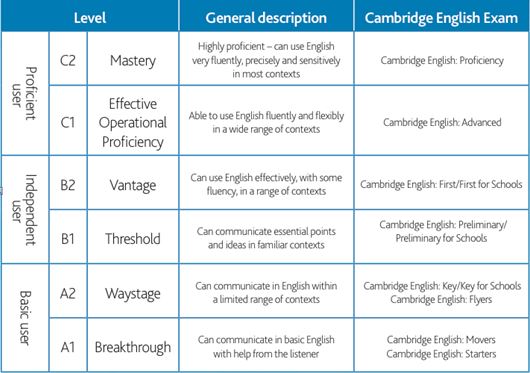Both teachers and learners will benefit from referring to the CEFR and they can do this either in English or by reading a translation in their own language. Learners can access the DIALANG self-assessment statements to monitor their progress and these will provide a set of goals for each skill at each level of their learning. Here are the B2 statements for Writing, for example:
I can evaluate different ideas and solutions to a problem.
I can synthesise information and arguments from a number of sources.
I can construct a chain of reasoned argument.
I can speculate about causes, consequences and hypothetical situations.
Perhaps the most important benefit of using the CEFR as a teacher is that it gives you a much clearer picture of what learners at a given level are capable of. Through your own teaching experience, you will already have a general idea of how Basic learners differ from Independent or Proficient ones – that is, beginners as opposed to intermediate or advanced students. However, it is less easy to pinpoint all the differences between, say, an A2 learner and a B1 learner, and to fully understand what is involved in getting your students from one CEFR level to the next.
You can use the CEFR to help you shape your teaching syllabus and to inform your selection of textbooks and other classroom materials. The CEFR also provides you with a ready-made set of objectives for your class. And these will help you to prepare for end-of-year assessment, whether this is internal or leading to an external qualification. Many international examination boards use the CEFR to define the scope of what they are testing at each level. Cambridge English Language Assessment does this and below is a table showing how its examinations are linked to the CEFR:







